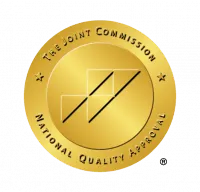Is “Pink Cloud Syndrome” a Real Thing? Euphoria in Early Recovery
If you’re in recovery, it’s likely you’ve heard of a phenomenon known as the “pink cloud.” This refers to a period of elation and confidence some people experience after the first month or two of sobriety, when things are going well.
The pink cloud can feel exhilarating, and has its benefits, but it may also be a threat to recovery. “Pink clouding” can lead to unrealistic expectations, and a tendency to disengage from treatment because one already feels “better.” When the positive feelings ebb, this can contribute to relapse in some cases.
Here, we’ll discuss the pink cloud experience, what it feels like, how long it lasts, its benefits, and its dangers. We will also discuss how to navigate the arrival and disappearance of the pink cloud, and how to stay steady through the ups and downs of sobriety.
What Is the “Pink Cloud,” and Does It Really Exist?

Pink cloud syndrome, also known as “pink clouding,” refers to a “honeymoon” stage of early addiction recovery that involves feelings of optimism and exhilaration. The term is often used in Alcoholics Anonymous (AA) circles to describe members who are unrealistically happy and overconfident in early sobriety. As the logic goes, people experiencing this must be extra cautious of relapse, since the feeling is only temporary.
According to most sources, the term “pink cloud” originates with AA. But one of the first definitions in print comes from Bob and Deborah Wright’s 1992 self-help book, ”Dare to confront.” The authors describe pink clouding as the euphoric (on a cloud) feeling where things look rosy (pink) that occurs after someone stops using and is feeling healthy. They explain that once the high wears off, the challenge of addiction returns.
Some argue that pink cloud syndrome is a myth, and that not all recovering addicts experience it. Others argue that as long as you are realistic about the work ahead—like identifying triggers and developing new coping skills—you can enjoy the initial feelings of happiness without crashing and relapsing.
How Long Does the Pink Cloud Last?
There is no definite answer regarding the duration of the pink cloud stage, since each person is different. Typically, people begin to experience it early on in their recovery. For some it lasts a few days, and for others a month or two.
Either way, this stage is temporary. And as it fades, one’s emotional state changes again. Coming down from the “pink cloud high” can bring feelings of disappointment, discouragement, and frustration. These can impede the recovery process—or, worse yet, lead to relapse.
What Are Some Signs That You Are “Pink Clouding”?
So, how can you tell if you or a loved one is experiencing pink cloud syndrome? Here are some common indicators:
- Elevated feelings of happiness and euphoria
- Optimism and positivity
- Confidence about your ability to stay sober
- Commitment to making positive changes in your lifestyle
- Increased awareness of your emotions
What Are the Upsides of the Pink Cloud?
Although there are some concerns about the negative consequences of the pink cloud experience, there are also benefits. According to substance abuse counselor Pamela Duff in a recent Forbes article, the pink cloud can help people find a new lease on life. “It can give people the energy and hope to mend broken relationships, reenter the workforce or school and prioritize a routine of engaging in recovery-based personal work.”

Experiencing the pink cloud can motivate people to pursue change and heal from addiction. A person’s outlook on life can shift in a more empowered and optimistic direction. Some may begin to feel hopeful for the first time in years. Therefore, if one harnesses the pink cloud in a productive way, it can be an important stage in pivoting towards a newer, healthier lifestyle.
What Are the Dangers of the Pink Cloud?
Programs like AA are known for raising the red flag when it comes to pink cloud syndrome. And for good reason. The false sense of security that occurs during the pink cloud phase can result in some bad decisions for those with alcohol use disorder.
For example, if someone is feeling too optimistic, they may quit seeing their therapist or stop attending meetings. They may engage in risky behaviors, or even decide to drink alcohol again because they mistakenly believe they are over their dependency.
In addition, as the pink cloud wears off, post-acute withdrawal syndrome (PAWS) can quickly emerge. PAWS is described as a secondary phase of withdrawal that typically occurs for weeks or months. It usually includes psychological or emotional symptoms such as memory issues, fatigue, depression, and anxiety, which can lead to drinking again.
Tips For Navigating the Pink Cloud
Navigating the pink cloud begins with educating yourself about it. Knowing what is happening can help you keep your expectations realistic and avoid overconfidence, while still reaping the benefits of optimism. By remaining cautious and self-aware, you can harness the motivation and energy of the pink cloud to establish good habits and self-care routines, which will be essential to future stages of recovery.
Here are some tips:
- Keep a journal or write encouraging notes to your future self for when you are feeling low or need a boost.
- Be sure to stay engaged with your therapist or recovery coach to discuss setback prevention and receive ongoing support.
- Establish healthy diet, exercise, and sleep routines.
- Regularly connect with friends and loved ones.
- Learn mindfulness and relaxation techniques.
- Make time for hobbies.
- Seek out inspirational books and videos about recovery.
Staying Steady Through the Ups and Downs
Recovery can be a long and often challenging process. The pink cloud phase feels very rewarding and is to be enjoyed, but it is important to always keep your eye on the big picture, and move steadily towards your long-term goals.
When “pink clouding,” you may be tricked into believing that you no longer need support. However, disconnecting during this period can leave you very vulnerable once the positive feelings subside and the dark clouds come rolling back in.
Offer yourself encouragement by stating, “I am thankful that I feel great today, but I need to be realistic and prepare myself for challenging times ahead.” It’s crucial to stay engaged with your support system and establish self-care routines that feed your body, mind, and relationships. The goal is to build a solid foundation, so you will be fortified for any peaks and valleys you will encounter on your road to recovery!
Learn more about Ria Health’s online coaching support for people in early recovery.
Will insurance cover treatment? Verify Coverage
Have Questions? Call (800) 504-5360



